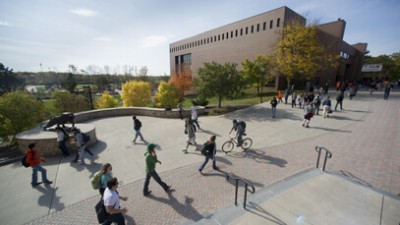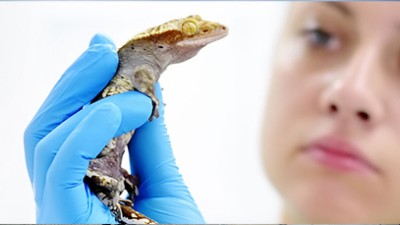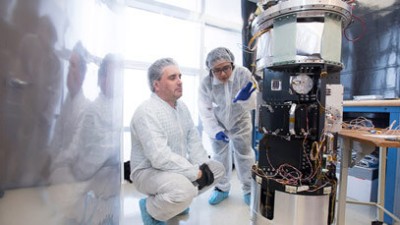News
-
February 23, 2022

RIT’s remote sensing experts help scientists keep an eye on the Earth
Scientists from RIT’s Chester F. Carlson Center for Imaging Science recently helped successfully bring the new Landsat 9 satellite online and are partnering with a startup on a bold new initiative to help scientists in government and the private sector monitor changes in the Earth’s surface temperature.
-
February 20, 2022

Sustainability seminar discusses new research in wetland restoration
Campus Times interviews Professor Christy Tyler about how to rethink wetland ecosystem restoration.
-
February 14, 2022

RIT scientists develop biophysical model to help better diagnose and treat osteoarthritis
Scientists from RIT and Cornell University have teamed up to explore cartilage tissue’s unique properties with the hopes of improving osteoarthritis diagnosis and treatment. The team published a new paper in Science Advances outlining their findings.
-
January 31, 2022

Undergraduate research on the rise at RIT
With the help of strong mentors, undergraduate researchers cultivate critical thinking, collaboration, and problem-solving skills. Conducting research can help students synthesize concepts they learned in their classes to create something new.
-
January 31, 2022

Scholars earn coveted early career awards
Three faculty members who chose to start their research careers at RIT received prestigious National Science Foundation CAREER Awards in 2021. Their research aims to advance the foundations of machine intelligence, artificial intelligence, and clean energy.
-
January 31, 2022

Tait Preserve becoming hotbed for interdisciplinary research
RIT has an emerging new hotspot for interdisciplinary research about 25 minutes from the main campus. The Tait Preserve includes a 60-acre lake and a private mile of Irondequoit Creek adjacent to Ellison Park, offering endless opportunities for research, education, and conservation activities.
-
January 20, 2022

Enveloped by 'Beyond Van Gogh'
City Newspaper talks to Roy Berns, retired professor of color science, about the “Beyond Van Gogh: The Immersive Experience” art exhibit.
-
January 20, 2022

RIT scientists confirm a highly eccentric black hole merger for the first time
For the first time, scientists believe they have detected a merger of two black holes with eccentric orbits. According to a paper published in Nature Astronomy by researchers from RIT and the University of Florida, this can help explain how some of the previous black hole mergers are much heavier than previously thought possible.
-
December 16, 2021

Multiple RIT scientists contribute to the newest space telescope
When the James Webb Space Telescope (JWST) launches, it will mark the culmination of nearly 30 years of development on the most powerful observational instrument ever made. Numerous members of RIT’s College of Science have been involved in its creation or will work on projects once it becomes operational.
-
December 8, 2021

Setting the Stage for the Performing Academic
RIT students have never had as many ways to pursue their love of performing arts than they do now. From scholarships, new clubs and classes, private music lessons, community partnerships, and exciting new venues being built on campus, performing arts for RIT students is literally becoming a show stopper.
-
December 6, 2021

RIT welcomes its most recent Newman Civic Fellow
Growing up in a family of teachers, Nidhi Baindur has valued education from a very young age. Baindur, a second-year computational mathematics major from the island nation of Mauritius, is well on her way to helping others as just the second RIT recipient of the Newman Civic Fellowship, which recognizes and supports community-committed students who are change-makers and public problem solvers.
-
December 6, 2021

RIT scientists develop machine learning techniques to shed new light on pulsars
New machine learning techniques developed by scientists at Rochester Institute of Technology are revealing important information about how pulsars—rapidly rotating neutron stars—behave. In a new study published by Monthly Notices of the Royal Astronomical Society, the researchers outlined their new techniques and how they applied to study Vela, the brightest radio pulsar in the sky.




